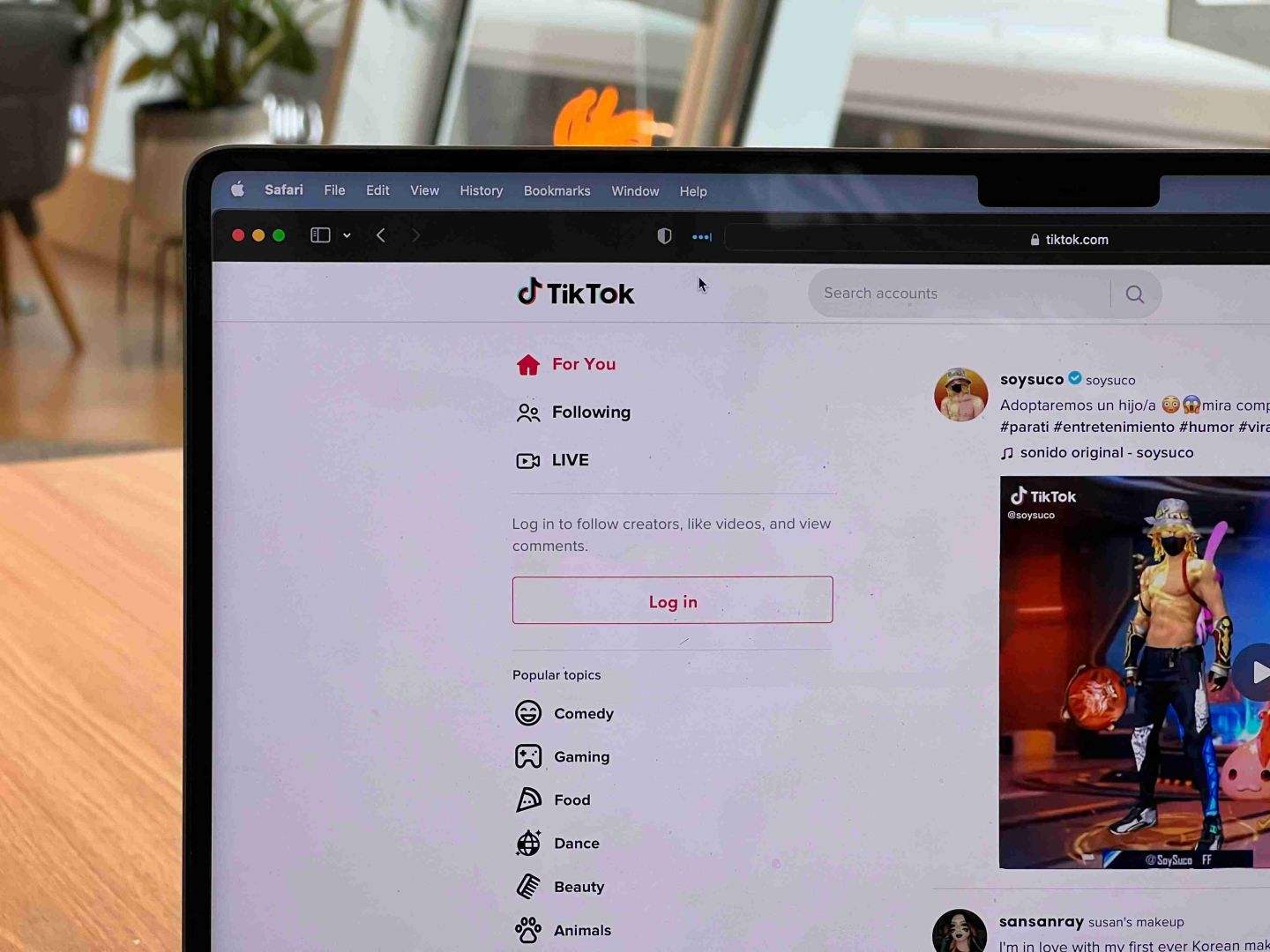
Our spy tools monitor millions of TikTok ads from over 55+ countries. Biggest TikTok Ad Library in E-commerce and Mobile Apps!
Try It FREEThe TikTok ad pixel is a powerful tool designed to enhance your advertisement strategies on the platform. By leveraging this feature, you can significantly improve your ad campaign performance and targeting.
A brief overview shows that the TikTok ad pixel is essential for optimizing ad campaigns. It helps in measuring performance, analyzing data, and retargeting audiences effectively. In order to maximize the potential of your ads and improve their performance, it's crucial to understand how to use the TikTok ad pixel effectively.
For valuable insights into improving your TikTok strategies, consider reading this article on why your TikTok videos might get 0 views and how to fix it. Additionally, if you're interested in exploring successful TikTok ad campaigns and replicating their strategies to build a profitable business, I recommend visiting this page which allows you to spy on top converting TikTok ad campaigns.
TikTok Ad Pixel is a piece of Javascript code that you can add to your website to track the actions users take after clicking on your TikTok ads. This allows you to collect valuable data on user behavior, enabling you to optimize your ad campaigns for better performance.
The TikTok Pixel works by capturing user interactions on your website and sending this information back to your TikTok Ads account. This data includes various user actions such as:
This enables you to track the effectiveness of your ad campaigns and make data-driven decisions.
Using the TikTok Pixel offers several advantages:
To set up the TikTok Pixel on your website, follow these steps:
<head> section of your website's HTML code.Creating custom audiences with TikTok Ad Pixel allows for more precise targeting. Here's how you can leverage them:
Custom audiences can be managed within the Ads Manager under the Audiences tab. By refining these segments, you can deliver highly targeted ads that resonate more effectively with specific user groups.
Learn more about TikTok Pixel and start optimizing your ad campaigns today.
To streamline the installation process, utilize the TikTok Pixel Helper Chrome extension. This tool allows you to add the TikTok ad pixel to your website and manage pixel events directly from your browser. The extension also helps in verifying that your pixel is correctly installed and firing as expected. By providing real-time feedback, it ensures that no tracking events are missed.
For those seeking more flexibility and customization in event tracking, the Events API offers a robust solution. This API allows you to programmatically manage and track pixel events, enabling you to tailor the tracking process according to your specific needs. Whether it's custom event triggers or advanced user interaction tracking, the Events API provides a more granular approach.
If coding isn't your forte, TikTok simplifies the implementation process with a tracking snippet. This piece of code can be easily added to your website, facilitating pixel event tracking without requiring extensive technical knowledge. Simply copy and paste the provided snippet where needed, and you're set to start tracking user actions.
The TikTok Pixel Helper Chrome extension is not just for installation; it plays a crucial role in ongoing verification. It ensures that your pixel is correctly installed and firing by providing diagnostic information about each tracked event. This tool is invaluable for troubleshooting issues and ensuring that your tracking setup remains accurate over time.
If you prefer an alternative method for event tracking, consider using the Events API. This approach offers more control over what gets tracked and how it’s managed. You can define custom events, specify parameters, and even handle complex user interactions programmatically.
Managing and analyzing pixel events is made easier through the TikTok Ads Manager's Events Manager tool. This interface allows you to:
By leveraging this tool, you can gain comprehensive insights into how users interact with your ads post-click.
When using cookies with TikTok ad pixel, it's important to follow data collection policies and guidelines. By complying with privacy regulations like GDPR and CCPA, you show respect for user privacy while gathering valuable data. Always let users know about cookie usage and get their consent before tracking their actions.
Cookies allow you to track different things users do, like their preferences and how they interact with your ads. This information helps you see how users engage with your content, so you can make your ads more targeted and effective. By studying cookie data, you can find patterns in user behavior that shape your ad strategy.
To measure how well your TikTok ad campaigns are doing:
These strategies help improve performance by showing you what's effective and what needs work.
The TikTok ad pixel uses cookies to gather important data for optimization:
This data is priceless for refining who you target and making your ads perform better.
Following privacy laws when using cookies isn't just a legal requirement but also builds trust with your audience. Here are some best practices:
By sticking to these guidelines, you can use cookies well while staying ethical in how you collect data.
Complying with data protection policies while using cookies for data collection sets your TikTok ad campaigns up for long-term success.
Optimizing your TikTok ads involves leveraging the data collected through the TikTok Pixel to enhance performance. Here are some effective ad optimization techniques you can use:
Conversion tracking is essential for measuring the effectiveness of your ads and identifying which campaigns drive the most conversions. Key steps include:
Audience retargeting allows you to reach users who have previously interacted with your ads, increasing the likelihood of conversion. Effective strategies include:
Leverage insights provided by TikTok ad pixel data to implement these strategies:
Conversion tracking plays a crucial role in measuring ad campaign effectiveness. It helps you:
Reengage interested users and drive conversions by:
These strategies harness the full potential of TikTok ad pixel data, driving improved performance and higher ROI for your campaigns.
Ensuring the accuracy and functionality of your TikTok ad pixel is crucial for effective ad campaign optimization. Regularly testing and maintaining the pixel can help you identify and resolve potential issues that may affect tracking and conversion measurement.
Regularly test the TikTok ad pixel to verify it accurately tracks events and conversions. This involves:
When issues arise with your TikTok ad pixel, it's essential to troubleshoot promptly. Common problems include:
<head> section of your website's HTML.Performing routine maintenance on your TikTok ad pixel keeps it running smoothly. Key maintenance tasks include:
Implement best practices for ongoing maintenance of your TikTok ad pixel:
Regular testing, proactive troubleshooting, and consistent maintenance ensure that your TikTok ad pixel continues to provide accurate data for optimizing your advertising efforts.
By implementing the strategies we've discussed in this article, you can greatly improve the performance of your ad campaigns. Using the TikTok ad pixel offers several benefits, including gathering important data, refining targeting, and increasing ad effectiveness.
Here are three key actions you can take to make the most of the TikTok ad pixel:
Start using the TikTok ad pixel today to drive better results and achieve higher ROI on your advertising efforts.
Receive top converting landing pages in your inbox every week from us.
Must Read
User-generated content (UGC) is transforming the way brands connect with audiences through InStream ads. Learn how authentic, user-driven videos build trust, engagement, and stronger emotional connections. Discover best practices for integrating UGC seamlessly into your ad strategy to boost credibility and conversions. Ideal for marketers looking to create more genuine and relatable advertising experiences.
Rachel Thompson
7 minDec 12, 2025
Must Read
Short-form video ads are the key to grabbing attention in a fast-paced holiday market. Learn how to craft captivating, bite-sized videos that inspire action and boost conversions. Discover best practices for storytelling, platform selection, and creative optimization. Perfect for marketers aiming to engage holiday shoppers through dynamic, scroll-stopping content.
Rachel Thompson
7 minDec 4, 2025
Trending
Year-end campaigns don’t have to suffer from ad fatigue. Explore innovative ways to revive your marketing efforts with fresh creatives, updated messaging, and smarter targeting. Learn how to balance innovation with consistency to keep your audience engaged and conversions steady. Perfect for advertisers looking to finish the year with renewed energy and impactful results.
Dan Smith
7 minNov 27, 2025




